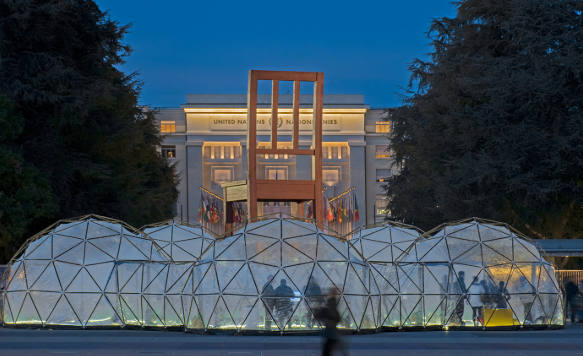Artists are known to take inspiration from the world around them. So it’s no surprise that some have begun shining light on one of the most pressing environmental issues of our time—air pollution.
According to the World Health Organization, every year around 7 million premature deaths are caused by air pollution, with 9 out of 10 people breathing toxic air. Air pollution is also known to contribute to climate change and so efforts to tackle it can also help address the climate crisis.
The time to act is now, and artists, like so many others are looking at ways to raise awareness about air pollution, find solutions to reduce it and even use it as a resource.
Pollution Pods
Michael Pinsky got inspired by the differences between the various types of air pollution, when he set out to make Pollution Pods. The project consists of five domes, each imitating air in five different areas of the world: Northern Norway, London, New Delhi, Beijing and São Paulo. As you move through the domes you experience varied levels and sources of air pollution.
“I wanted to have very different sensations from one dome to another,” Pinsky told UN Environment. “It's not just a question of how strong the pollution is but that they have very different characteristics as well.”
For London, Pinsky recreates the smell of diesel. For Beijing, he mixes the smells of industrial fumes, coal or wood-based heating, and transportation emissions. While New Delhi whiffs of burnt plastic and grass, as citizens still burn a lot of their rubbish.
Luckily, the pollution is only in smell and visibility, without the actual harmful gases. But Pinsky says the experience still isn’t very pleasant. That’s the whole point: air pollution isn’t pleasant.
Pinsky hopes Pollution Pods will lead to a more “radical approach” when dealing with air pollution, particularly with transportation. “It's not so easy to apply the same advocacy or philosophy towards different cities in the world,” he said. “But in some cases, you could turn the problem around in two years with the right policies.”
Turning air pollution into art
“Artists are known to take inspiration from the world around them. So it’s no surprise that some have begun shining light on one of the most pressing environmental issues…”
source: Turning air pollution into art


